Many tech directors fear an influx of popular digital tools due to network security risks and potential crashes. Even known technologies, when updated or hacked, can cause chaos. Recent examples include Crowdstrike’s update that crashed computers and grounded airlines. Controversies in reading and math instruction also highlight the need for caution. Schools must check effectiveness before deploying a new digital tool. The SHINE acronym can help with this evaluation process.
Why You Need the SHINE Framework
“I want ed tech to support my teaching and learning efforts. When it doesn’t, it’s like a walkthrough a minefield. Every misstep can lead to chaos. It disrupts our rhythm and progress.” As I sat across the table from the Director of Mathematics, I was checking off a mental list. The Math Director in a large urban school district wanted to roll out a new program to classrooms. The curriculum director’s focus was on the benefit to students. That is, on what the technology tool COULD do to benefit students.
As the technology director, my focus was on the impact the technology would have on the teacher. For me, it all boiled down to one question:
Would the technical obstacles prevent the achieving the student benefits?
At that moment, I decided to compile a list of questions. The purpose of those questions? Assist anyone in understanding how technical obstacles can stop learning in its tracks. The list was one page long, arranged into sections. It was a collection of questions that stopped technology implementations. That’s ironic given my role to ease technology integration. But there are many technologies people sell schools that they don’t need.
Today, I wish I had enjoyed access to a framework like SHINE that is easy to remember and apply.
Introducing the SHINE Framework
SHINE is a simple acronym. The letters in the acronym represent these concepts:
- Suitability. Ensuring solutions are appropriate for their intended purpose.
- Human Oversight. Maintaining human control and intervention capabilities in system operations.
- Insight into Data. Understanding the data used by systems for transparency and accuracy.
- Necessity and Novelty. Justifying the need for solutions and recognizing their innovative aspects.
- Ethics and Equity. Promoting fairness, justice, and moral principles. These are evident in both the development and deployment of solutions.
For that Math Director, the stumbling block was the “Insight into Data” domain. That is, all the class rostering data involved every teacher importing data. The data, comma-separated values (CSV) files, was necessary for every student group. This made the solution unsuitable for classroom teachers to deploy.
The rush to put AI in classrooms presents the similar opportunities for failure. Today, single-sign-on (SSO) solutions make it easy to import CSV files for all students. That happens in the background. But let’s take a closer look at SHINE before applying it to AI-powered digital tools.
Tough Questions, Easy Answers
When you ask a tough question, you may get an easy answer. Questions and answers like the following come to mind:
- Do teachers need to update class rosters on a daily basis to use a software intervention? No
- Can the Tech Department automate hourly or daily class roster updates in a secure manner? Yes
- Is the data collected safeguarded against hacking? Yes
- Does the vendor allow for easy export of data should funding come to an end? Yes
- Does the District have to poke holes in the firewall or open special ports for the solution to work? No
- Does this solution make teaching learning more efficient and effective? Yes
When considering SHINE’s five-step framework (get a copy via Canva), think of it as a tool teachers and admins can use. Should we bring an AI-powered tool into the classroom?
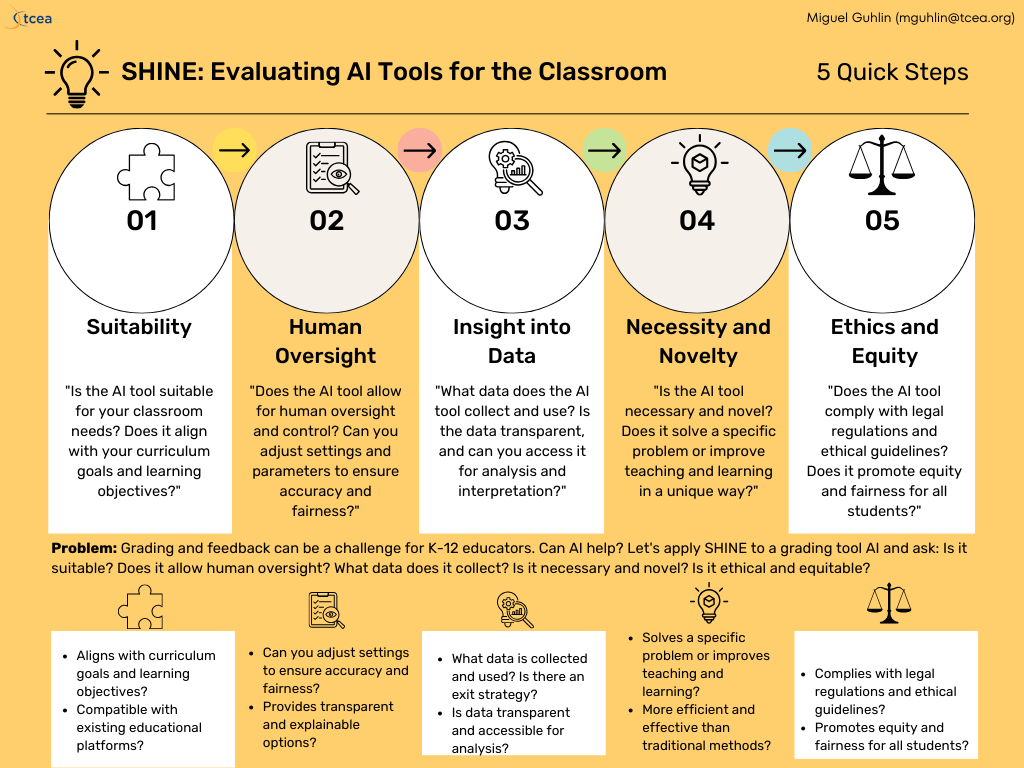
SHINE Framework Questions
With that in mind, let’s take a look at some of the questions SHINE asks:
Suitability (S)
- Does the tool align with your curriculum goals and learning objectives?
- Is the tool compatible with your existing educational platforms and tools?
- Can the tool get you the desired result without a lot of fine-tuning?
Human Oversight (H)
- Does the tool allow for human oversight and control?
- Can you adjust settings and parameters to ensure accuracy and fairness?
- Does the tool provide transparent and explainable decisions?
Insight into Data (I)
- What data does the tool collect and use?
- Is the data transparent, and can you access it for analysis and interpretation?
- Does the tool provide insights into teacher or student performance or learning?
Necessity and Novelty (N)
- Is the tool necessary and novel?
- Does it solve a specific problem or improve teaching and learning in a unique way?
- Does the tool provide a more efficient and effective way of getting work done? That is, compared to traditional methods?
Ethics and Equity (E)
- Does the tool follow legal regulations and ethical guidelines?
- Does the tool promote equity and fairness for all students?
- Does the tool avoid biases and discriminatory practices?
With these question in mind, schools can have a conversation about bringing AI tools into K-12. Let’s see what SHINE looks like in action.

SHINE in Action
Let’s apply SHINE from the perspective of three people when considering responses:
- Classroom teacher
- Curriculum director
- Technology director
It might be helpful to apply SHINE to three categories of AI-powered tools. These are finding their way into schools under the guise of productivity or cheating. The categories include:
- Teacher Helper Tool, such as Eduaide, Khanmigo, MagicSchool
- AI Chatbot for Writing. Examples include ChatGPT, Pressto, Claude
- Quiz Tools like Quizlet Plus, Quizizz AI, QuizWizard
Let’s explore each category with SHINE in mind.
- View SHINE on Teacher Helper Tools
- See SHINE for AI Chatbots for Writing
- Explore SHINE for Quiz Tools
Note: You can see a question from each perspective interwoven beneath each letter of SHINE.
SHINE: Lighting the Way to Responsible AI Adoption
The best way to combat fear is knowledge and ensuring a safe space to assess digital tools pushing their way into K-12 education spaces. The SHINE framework offers a structured approach for evaluating AI-powered education tools. Use this framework to make sure all perspectives are represented before making the big investment in Ed Tech.



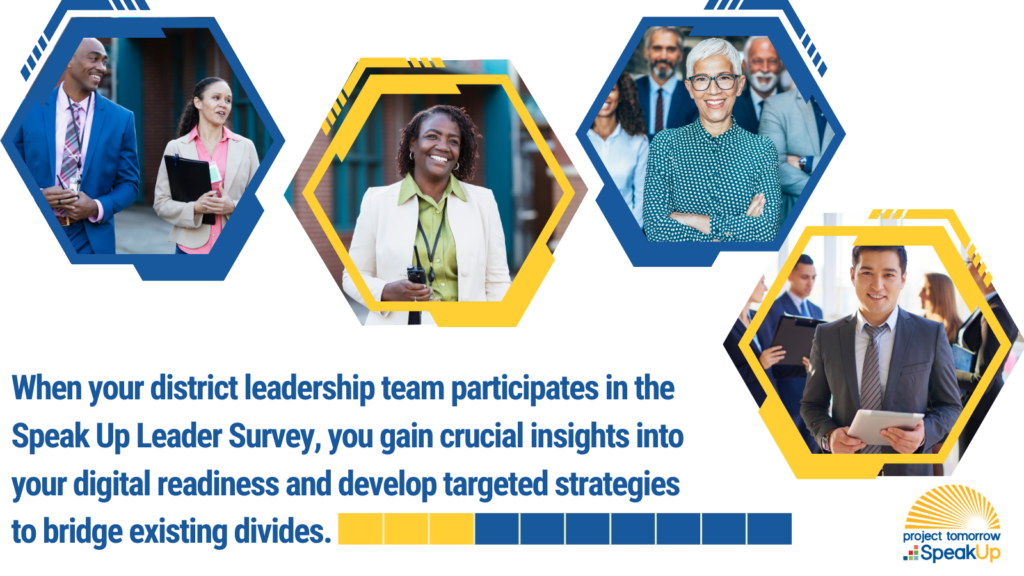
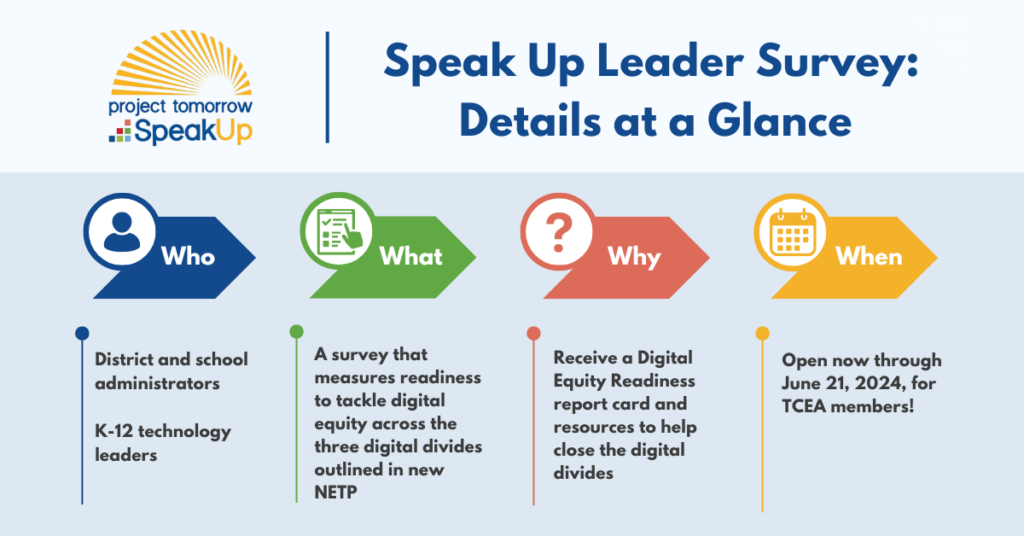



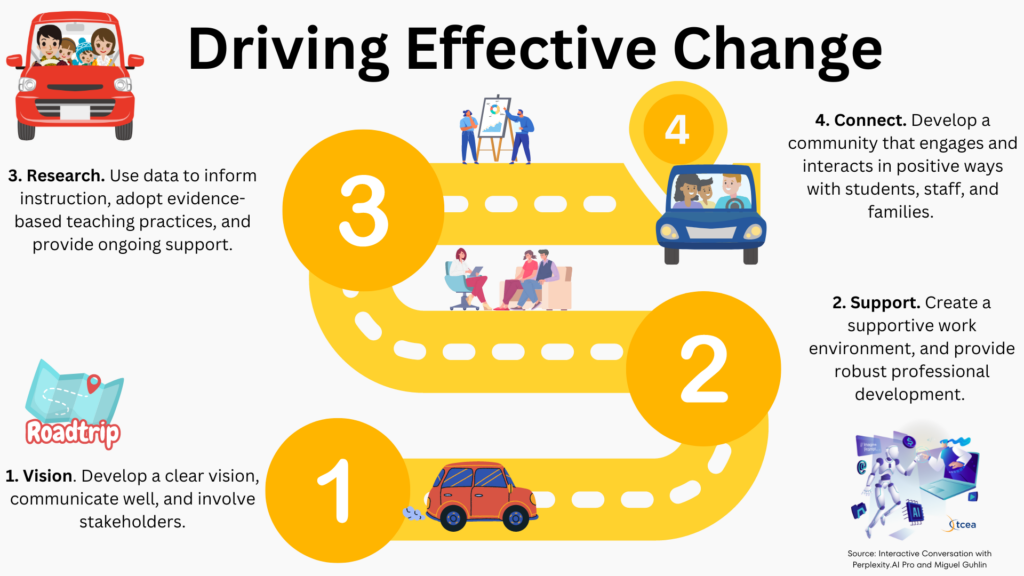




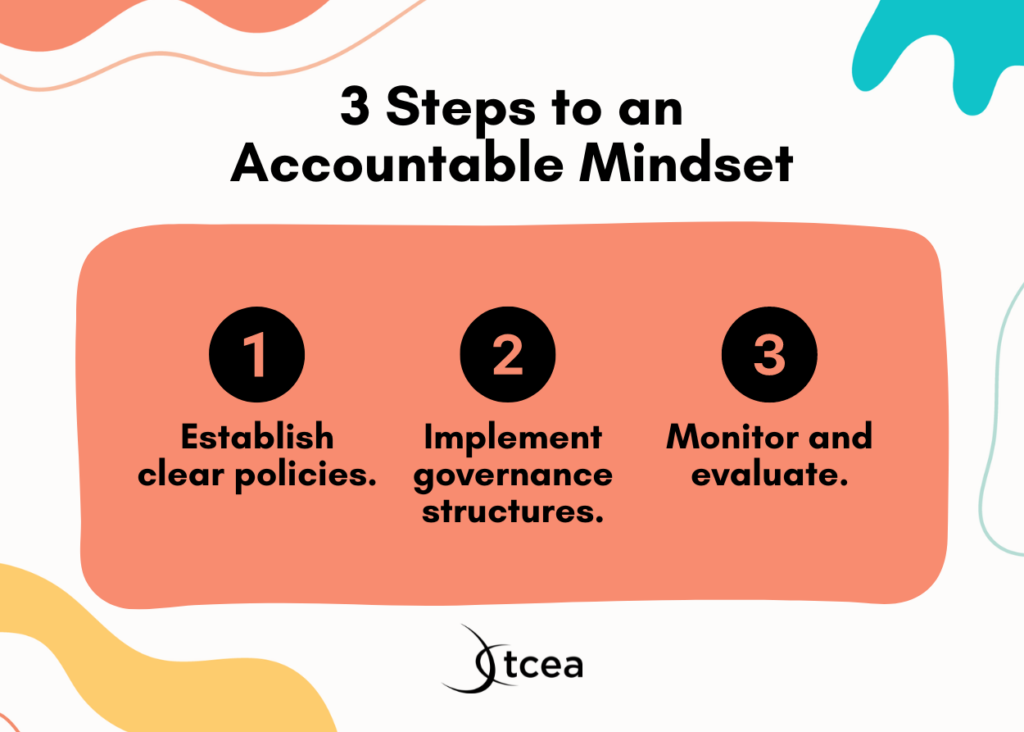
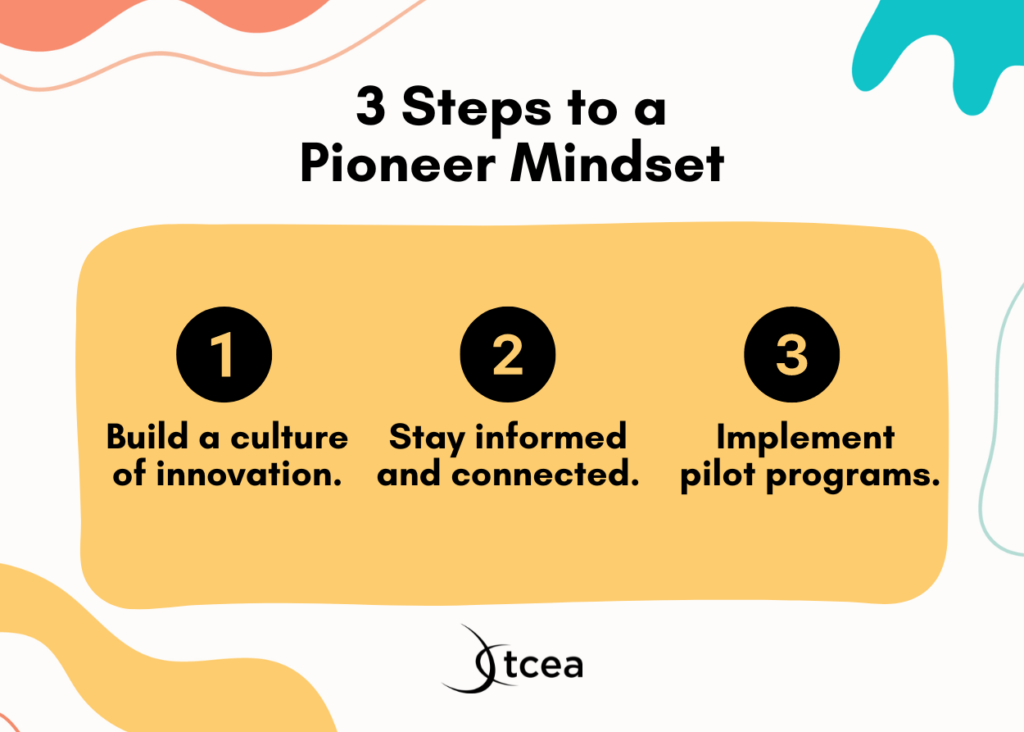
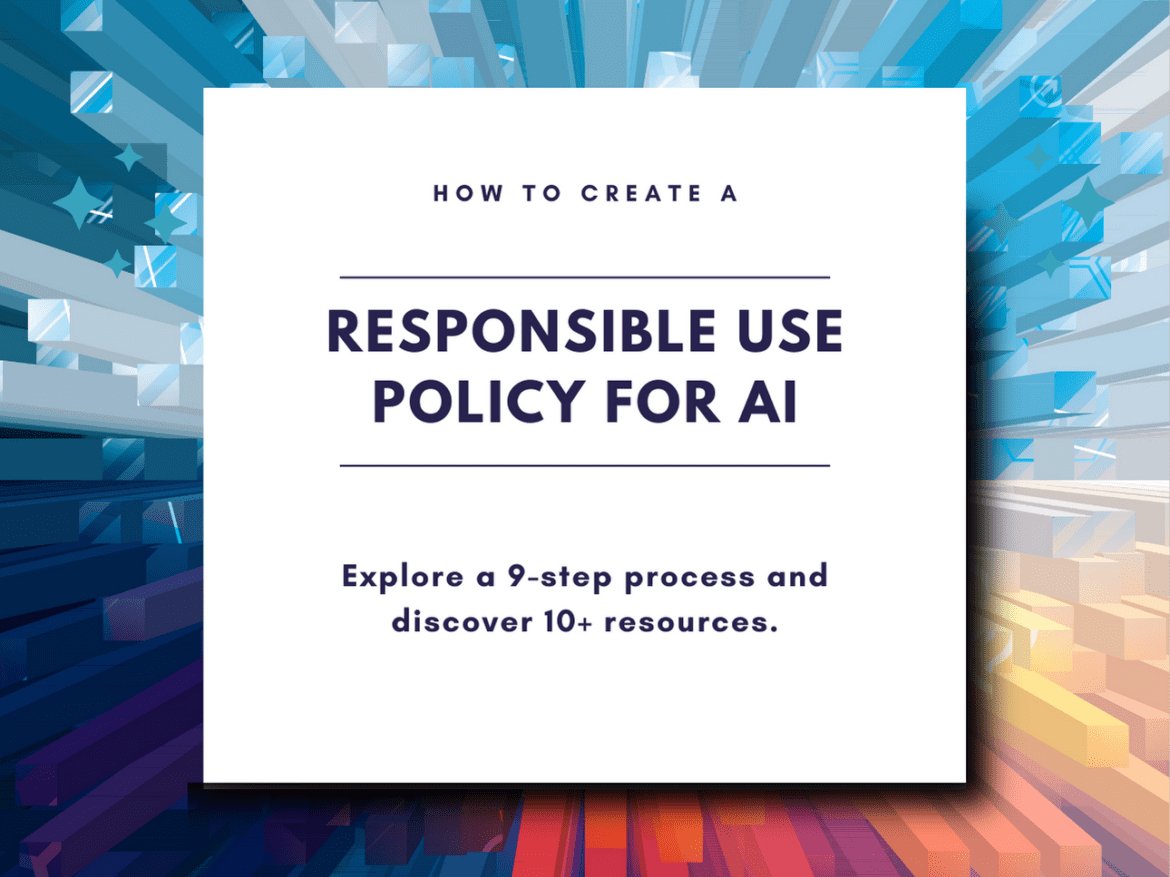
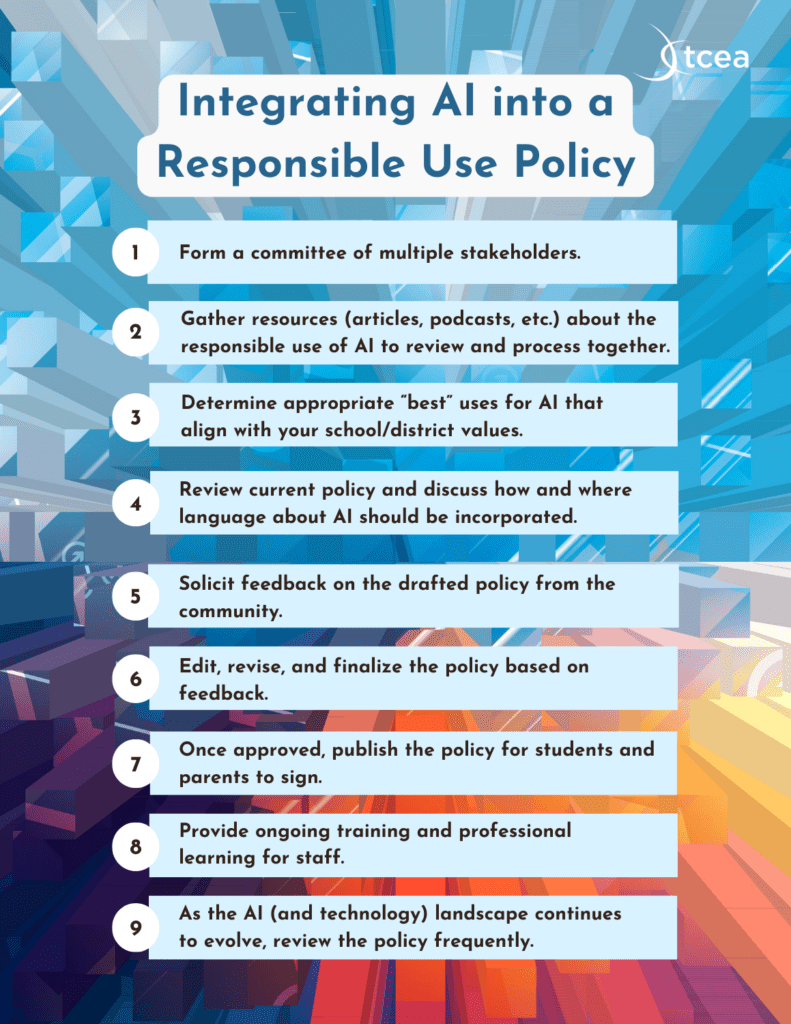


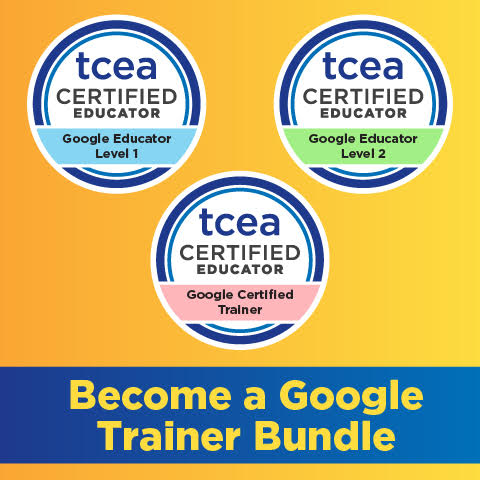
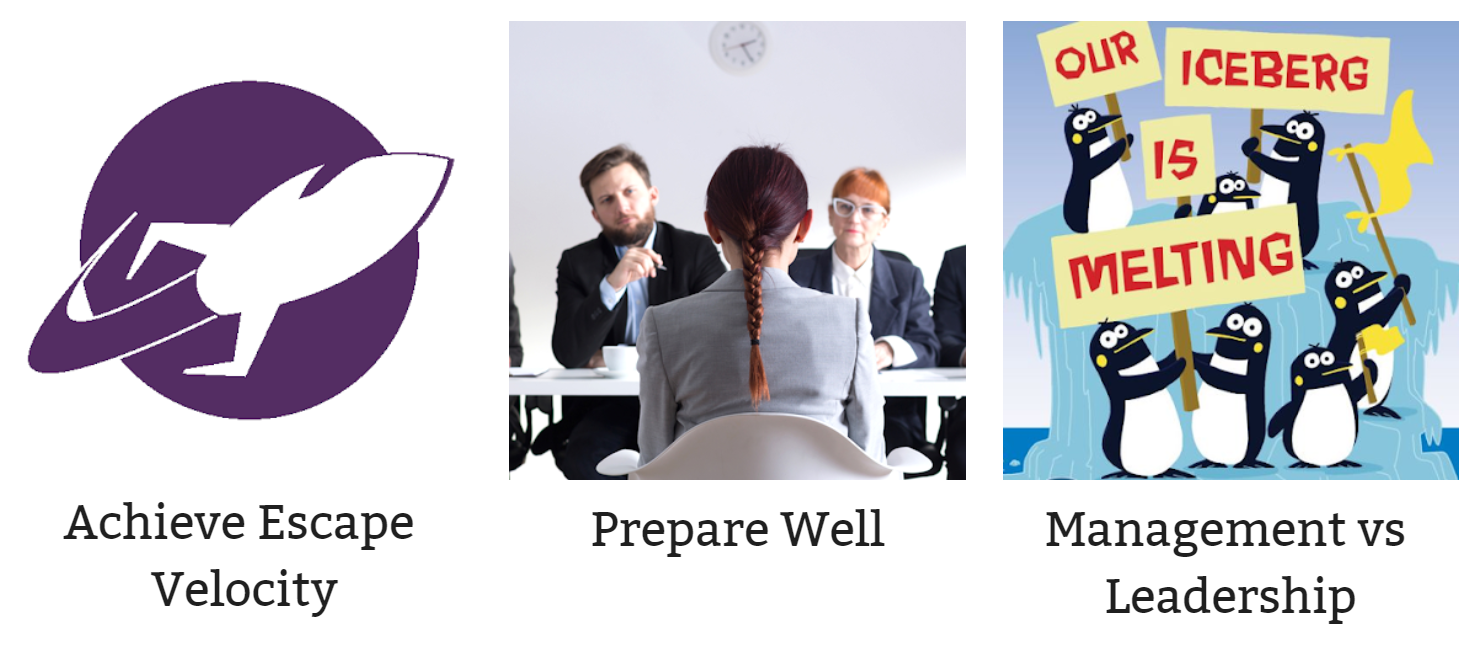


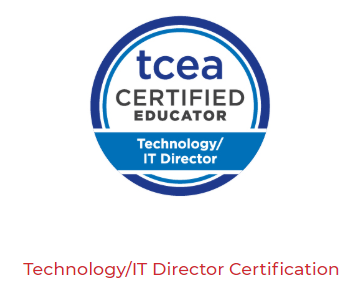

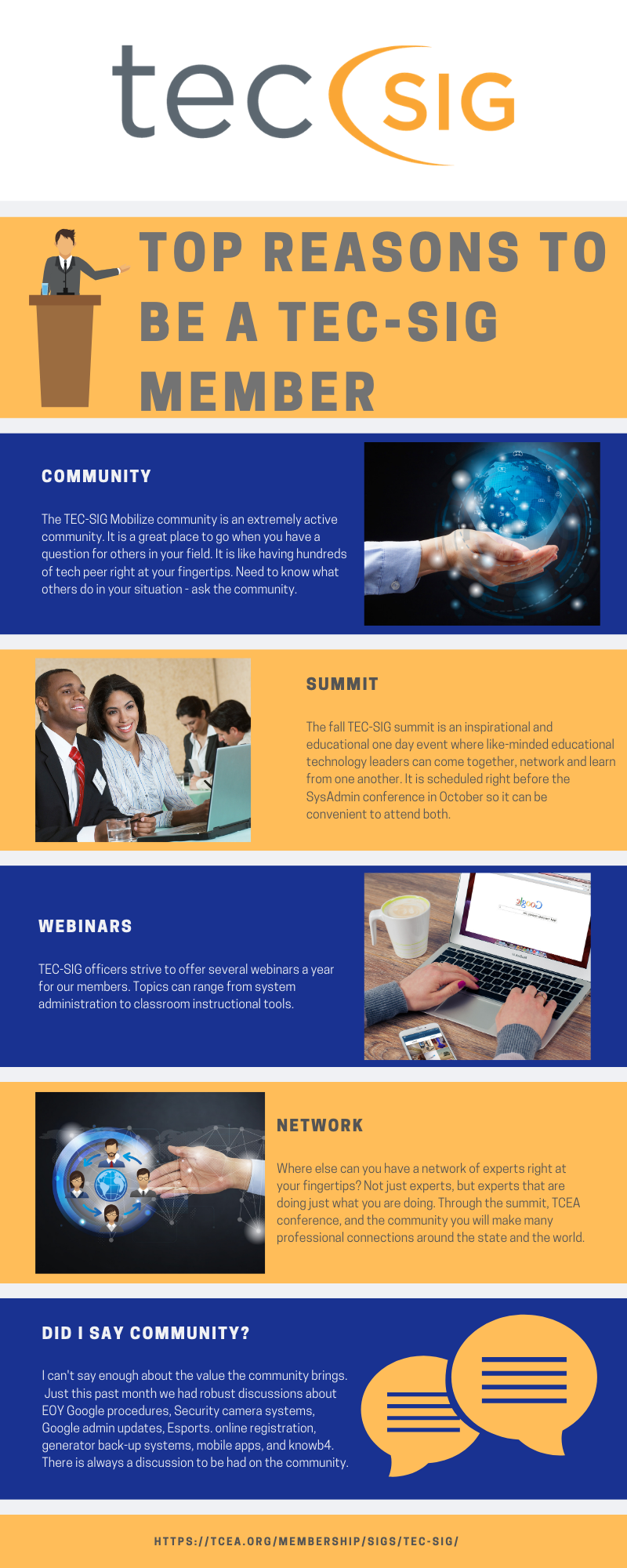

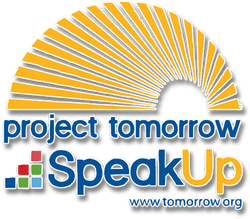
 something because of their interests. This helps me see how students are using technology when they are looking for specific information or want to learn a skill. Only 9% of both middle and high school students post a question on a discussion board or a forum. Do we need to be more intentional in using this type of application? Do they just not know how, or have they found better ways to seek answers to their questions?
something because of their interests. This helps me see how students are using technology when they are looking for specific information or want to learn a skill. Only 9% of both middle and high school students post a question on a discussion board or a forum. Do we need to be more intentional in using this type of application? Do they just not know how, or have they found better ways to seek answers to their questions?  I also discovered that 43% of my teachers are facilitating student collaboration projects using online tools. This is such a great skill. How can I leverage these teachers to help other teachers do this as well? Also, I’m pleasantly surprised that 44% of my teachers are using an online curriculum. However, I want to know more. What is the frequency? Are they occasionally doing this or is this something they use every day? I also want to know what they are using. Are they using the district’s Learning Management System, or is it an online textbook?
I also discovered that 43% of my teachers are facilitating student collaboration projects using online tools. This is such a great skill. How can I leverage these teachers to help other teachers do this as well? Also, I’m pleasantly surprised that 44% of my teachers are using an online curriculum. However, I want to know more. What is the frequency? Are they occasionally doing this or is this something they use every day? I also want to know what they are using. Are they using the district’s Learning Management System, or is it an online textbook?  integrate digital content, tools, and resources into their daily instruction. 51% said they wished they had a classroom set of digital devices. 49% said they needed to know that their students had adequate broadband access outside of school and 46% indicated they were concerned that they didn’t have consistent, reliable internet access within school. Maybe I need to have my staff do some focus groups related to internet access and speed. Looking at my network resources, they should have adequate bandwidth, but maybe something is happening on campus that I am not aware of. While my team is on campus, I probably should also have them ask teachers about the availability of technical support since 47% of the teachers indicated it was lacking. And lastly, my teachers still need time to plan with their colleagues (60%) and additional professional development (50%). I need more staff to be able to meet this need!
integrate digital content, tools, and resources into their daily instruction. 51% said they wished they had a classroom set of digital devices. 49% said they needed to know that their students had adequate broadband access outside of school and 46% indicated they were concerned that they didn’t have consistent, reliable internet access within school. Maybe I need to have my staff do some focus groups related to internet access and speed. Looking at my network resources, they should have adequate bandwidth, but maybe something is happening on campus that I am not aware of. While my team is on campus, I probably should also have them ask teachers about the availability of technical support since 47% of the teachers indicated it was lacking. And lastly, my teachers still need time to plan with their colleagues (60%) and additional professional development (50%). I need more staff to be able to meet this need! 